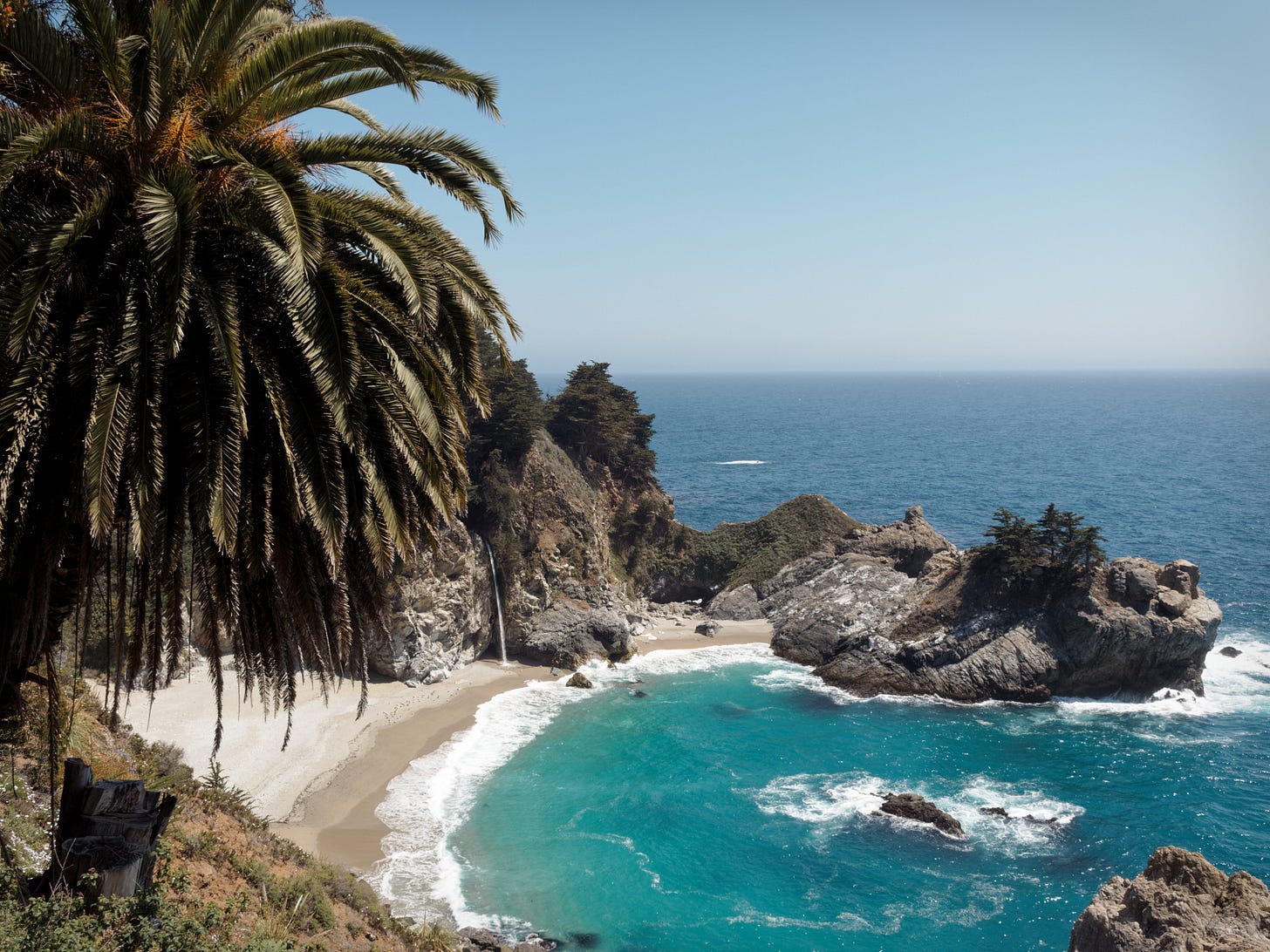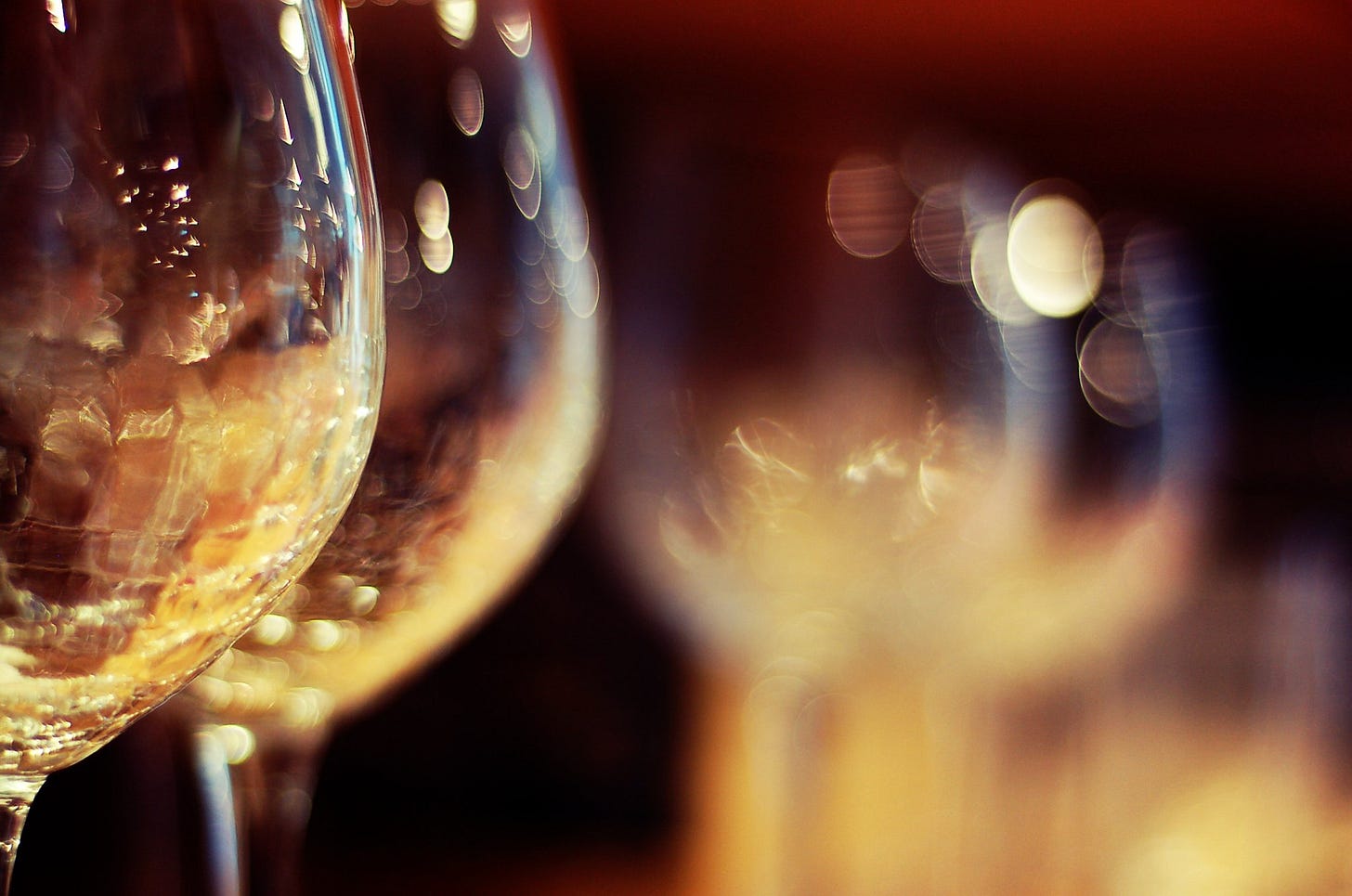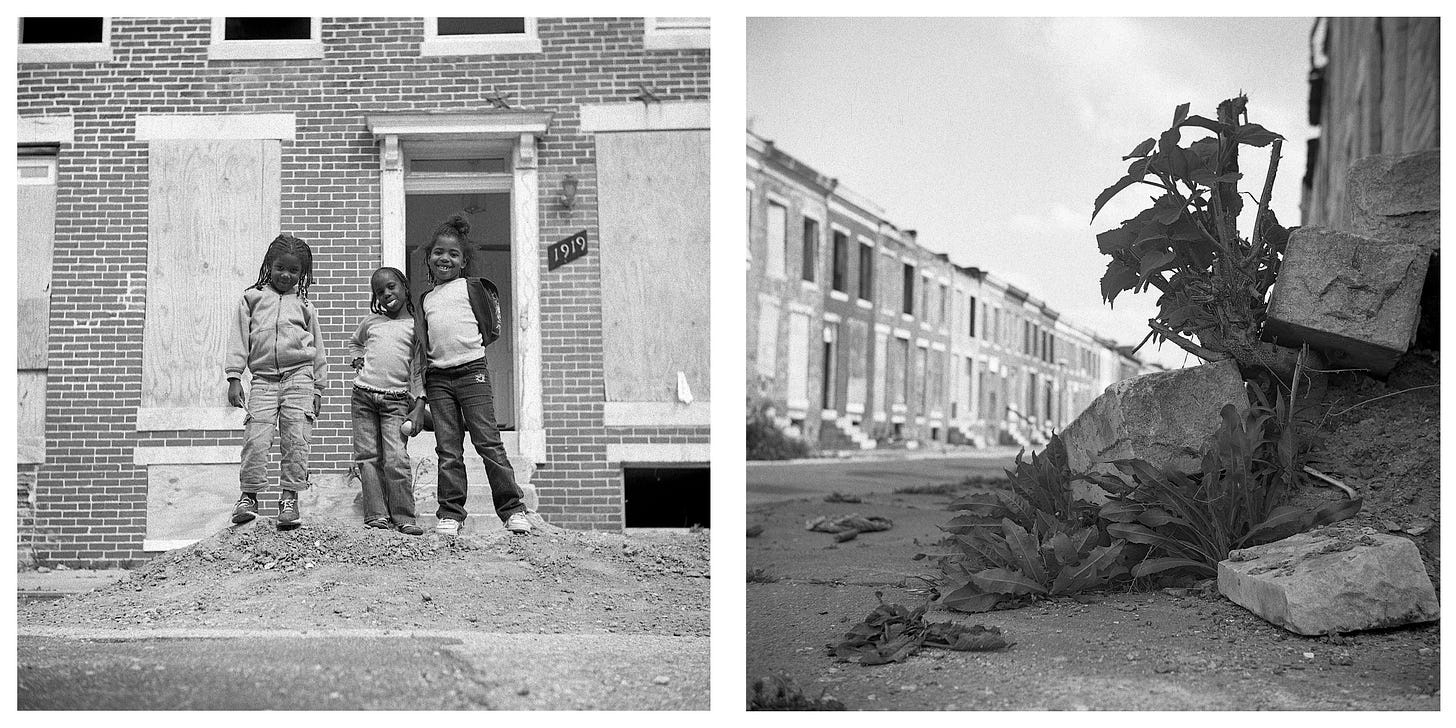If I don't share a new photograph to social media every single day, I will wither away into dust and blow away on the wind
And other lies
Author's Note: This essay is part of an ongoing series analyzing the effects of social media on my photographic practice. It began with a plea to occasionally break internet passivity to give props to the makers who enrich our lives and continued with an excoriation of algorithmic impacts on artistic vision. If this is not your cup of tea, or if you are tired of my exorcising my e-demons, might I recommend you read about my lovely trip to the Baltimore Museum of Art instead.
ESTEEMED EXPOSEURS—Sometime in the early 2000s, when I was really cutting my teeth on photography with a Nikon D50 and a Casio digicam, I joined Flickr in hopes of finding ‘my people’—and thus interesting photographs to emulate.
Let me explain. At the time, I was still quite early on in my military training. Nearly every hour of my day was dominated by overwhelming physical and mental curricula. I was teaching myself ‘proper photography’ after spending my childhood and adolescence taking fun photos with point-and-shoot or disposable film cameras, or occassionally my father’s Minolta SLR. In the absence of any ‘formal’ photographic education, the way to do learn the craft, I presumed, was to reverse engineer the photos I found interesting. Why photography? It gave me something to do.
I certainly wasn’t chasing clout. At least, not consciously. That word hadn’t yet transmogrified into its current form, with all its pejorative mass. What I was chasing was kinship and learning. I looked to my contemporaries—people who, like me, were figuring things out in real time, armed with secondhand cameras and a desire to make something interesting. These were not long-dead masters hanging in galleries. They were very much alive, and very much online. And if they could make images that moved me—better yet, move many more people like me—then maybe I could, too. I am going to give Young M a lot of grace, here. It’s easy to beat yourself up in retrospect, with all the intervening life lessons and embarassment that come with age. My intentions were, I think, mostly good: I wanted to get better. I wanted to be part of something.
But the danger of learning in public—especially on the internet—is that you’re not just absorbing technique. You’re also crystalizing audience expectations. You’re internalizing applause. And if you’re young, naïve, and still forming your sense of self, it becomes dangerously easy to mistake performance for progress, and attention for meaning. The reward mechanisms are invisible at first. But soon, you begin chasing them. And if you’re not careful, the reward becomes the misbegotten point.
The best way to find work on Flickr—in those days and, I’d argue, still today—was through Groups. They were exactly what they sounded like: informal gathering places organized around themes or rules. Some focused on sunsets; others offered unfiltered critique. A few trafficked in the wink-nudge ritual of sharing photos of one’s own spouse—tastefully risqué, plausibly deniable. Still others imposed a kind of civic toll: post whatever you like, so long as you leave a branded comment on the three images preceding your own.
I digress. The Group that I inevitably found myself drawn to was a 365 photo-a-day Group, that challenged its members to post a new photo in the Group every day for a whole year. The objective was to make new friends, learn new tricks, and improve as a photographer. For some reason I do not fully understand now, this appealed to me. And so I diligently began my year of daily photography. I met new and interesting people online. I envied people with interesting locales to photograph (the irony is not at all lost on me that at the time, I was stationed on the California coast, and I would love nothing more now than to revisit its foggy, jagged coasts for the chance at some new long exposures). And after my year was over, for lack of anything better to do, I kept up this audacious pace.

What started earnestly as a structured exercise in photographic discipline became an unexamined compulsion that would define my creative practice for the better part of a decade. That first year ended, but the posting habit continued—and as it did, the internet evolved around me, offering newer and supposedly better platforms for sharing work (later rebranded as ‘content’).
Platform after platform: Flickr expanded to include Blogspot, and then Tumblr, and 500px, which gave way to Instagram, and then the post-Instagram diaspora, and so on through the relentless succession of social media's evolutionary chain. With each link in that chain, I added a new platform upon which I must be daily active. The daily labor of uploading a photograph increased tenfold, because I never abandoned the old platforms—I dutifully added the new obligations to the old ones. I might lose my audience, after all. Each migration carried with it the same self-imposed task: one photograph per day, without fail, world without end, amen.
The mathematics of this multiplication are staggering when considered in aggregate. I did, in fact, take more than seven thousand photographs over the course of this extended experiment in artistic masochism—but that number obscures the true scope of the labor. Seven thousand photographs multiplied across an ever-expanding constellation of platforms meant tens of thousands of uploads, each requiring its own captions, tags, and specific social genuflections to maximize engagement. I would often force myself to photograph something—anything—simply to have something—anything— to post across this digital empire. A book spine on my shelf. The backs of people, out of focus, with the era-requisite ‘bokeh dots’ for extra clout, presented in high contrast black and white. Seven thousand times I chose the performative meta-act of creativity over actual creative action—or inaction.

Which is, of course, all it ever was: performance, in the most untheatrical and threadbare sense. A compulsive gesture staged for an audience of strangers and the mute applause of Group-dictated replies. A looping pantomime of artistic urgency. Look! it cried. I’m still here. I’m still making. I’m still rising to the top of your feed. Please don’t forget me. Please don’t scroll past. Please don’t consign me to the digital mulch heap of other has-been, D-tier, hobbyist image-makers.
Better to post a mediocre snapshot than to break the chain. Maybe the photos weren’t technically bad—though who can claim to judge such things objectively?—but one thing was certain: they were unequivocally not me. But how should I know? I never took the time to find out! Far easier to sustain the pretense of endless creativity than to admit that true creativity answers to no group rules, no algorithmic master, and certainly not the restless demands of a distracted audience.
I am not sure what I thought would happen if I missed a day. But the progression went something like this: first, the anxiety of habit, which compounds year after year until it transforms into something approaching superstitious dread. Miss a day and the entire edifice crumbles. Break the chain and invite cosmic retribution. The daily photograph becomes a kind of digital rite, an offering to the gods of an offering to the invisible court of social approval, necessary for no discernible benefit except that its absence might bring about some unnamed catastrophe—but really, obsolescence.
The social internet—that vast apparatus of daily expectation and habitual consumption—had achieved something remarkable: it had convinced me that saying nothing was better than saying something, so long as I said nothing consistently. This stemmed from the basic social contract of the networked world, where every day people log in expecting to be entertained, informed, distracted from the grinding banality of their own existence—that volume could substitute for voice. And I, dutiful content serf that I had become, felt obligated to provide my daily tribute to this expectation.
What was I feeding this insatiable beast, exactly? What had this relentless pace produced but a kind of aesthetic autophagy—a compulsive, self-devouring cycle so Bataillian in nature that creation folds back on itself until nothing remains but the desperate urge to keep creating to consume? My daily obligation warped photography from a tool of self-expression into a mechanical compulsion: any seeing, any production, so long as it landed online at the same time every day.
There is nothing inherently wrong with aesthetically pleasing but substantively ‘light’ photographs—I have written elsewhere about the value of the étude, the creative exercise pursued for its own sake, and the pleasure of technical mastery divorced from profound statement. I absolutely believe it can be an essential tool for learning. But when that becomes all you do, or when the exercise consumes your entire practice, you are now filling a void. And voids, by their nature, cannot be filled; they can only be temporarily occluded by the frantic accumulation of content.
The most insidious aspect of this self-inflicted torment was how it had colonized my understanding of what it meant to be a photographer in the first place. So pressed was I to perform and to maintain the relentless schedule of daily production, that I never developed a voice of my own—that would come later in my time behind a camera, long after I had finally broken free from the calendar’s little boxes, each a cell. The daily photograph had become my identity, until it became impossible to imagine myself without it. My—sigh— brand, if you will.
Somewhere in that compulsive blur of daily posts, small moments started to push through that reminded me photography could be more than a performance. Around 2009, I began to see photography not just as image-making, but as a way to explore meaning and interaction. I was in Baltimore for the day with a new-to-me Super Ricohflex TLR. Otakon was in town, and the corridor between the convention center and the west end of downtown teemed with costumed people. Still new to street portraiture and riddled with anxiety about approaching strangers, I found myself waiting at a crosswalk beside a woman dressed as a sort of bunny angel. Summoning what little courage I had, I asked if I could take her photo. She agreed warmly, but her boyfriend insisted on joining the frame, glowering at me the entire time. When I later scanned the film—film as a shortcut to meaning, now there is an essay for another time—I remembered that clash of emotions and laughed. That moment planted a seed. It would take years to bloom, but I realized then that photography could be more than simply making pictures; it could be a vehicle for genuine human exchange, a catalyst for emotion, and a way to document lived experience. Even at the cost of an angry stare from a jealous boyfriend.
The real breaking point came much later, when I suffered a series of nervous breakdowns and depressive episodes. I had spent years teaching myself how to make photographs—through mimicry, repetition, and obsessive study—but psychological wholeness proved harder to reverse engineer. So I tried something different. I went to therapy. Therapy led to meditation. Meditation led to the blunt, universal truth: I’m going to die. Which, as far as I know—we all do. But the realization that followed felt far more urgent: my time is limited. And if it’s limited, it’s valuable. What I was doing—most of what I was doing, photography aside—was not valuable. My life ought to be spent wisely, rather than indiscriminately.

This simple arithmetic—finite time divided by infinite possibility—transformed my relationship with the camera. More importantly, it exposed the elaborate dogma I’d built around my compulsive practice—a framework I suspect isn’t mine alone. The title of this essay names the central delusion, but the truth is perhaps messier: an ecosystem of self-deceptions kept the posting habit alive.

I convinced myself that daily posting would make me a better photographer. I believed consistency counted as creativity. I feared that missing a single day would cause my audience to forget me. I convinced myself that quantity could stand in for voice. One lie led to the next, until the whole structure of my practice rested on the brittle scaffolding of my underlying depression—rigid enough, just barely, to keep me upright. In a fit of madness I regret to this day, I deleted all my early photographs from Flickr—the only place they were archived—out of sheer embarrassment. I wish I hadn’t. You can’t measure progress without occasionally laughing at yourself.
I still take plenty of silly, throwaway photos—joy and spontaneity have their rightful place in any creative practice. But I’m far more deliberate now about what I share, and when I share it—despite the manic tempo of these last few weeks on Substack. The most honest thing I can do is say nothing at all, especially when I have nothing worth saying. And perhaps after reading this far, you believe that I don’t. So here, allow me to synthesize this.
In 2007, Armando 'Mando' Alvarez began posting photographs to Flickr—not long after I started. He posted his last photograph in 2016. I haven't seen or heard from him since, and I hope he is well. I think about him and his photos constantly. I couldn't tell you now if he posted every day, or every once in a while. But I can tell you that his work was moving, personal, evocative—and foundational to my own decision to pivot from reverse engineering the popular, to finding my first pubescent squeaks of a photographic voice. Mando's work lodged itself in the dark folds of my memory not because he posted relentlessly, but because when he did share something, it mattered.









"It becomes dangerously easy to mistake performance for progress, and attention for meaning." I love your writing, and this post really makes me think.
Fortunately or unfortunately, I’ve kept nearly all of my old work up on Flickr. I’m closing in on 20 years and I remember the past at which people would post but because I was shooting film, the process naturally slowed me down. That didn’t guarantee the work was any better or more cohesive though. I remember telling a friend that anytime I came across someone new whose work I admired, I’d start by looking at their oldest posts first. She was horrified by this.
I also have all my oldest IG photos up. My attitude is whatever, who cares. I’ve been caught in the posting rat race at times but it’s thankfully never lasted for long.